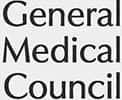
Regardless of whether you had acne when you were younger or you suffer from acne as an adult and now have scars, it can be very distressing and have an impact on your confidence. But modern aesthetic treatments offer effective ways to get rid of acne scars.
If you want to find out more about how to get rid of acne scars, read on to discover the treatment options and what type of results you can expect from them.
During puberty, acne is normally caused by hormonal changes. However, it is also possible to be genetically predisposed to suffering from acne. As an adult, acne may be a result of a hormonal imbalance and/or various other factors, including:
• Stress
• Pollution
• Menstrual cycles
• Skincare products
• Makeup
• The mini pill (oestrogen only).
Changing skincare and makeup may help to keep mild to moderate acne under control. Alternatively, a prescription for topical retinoids or antibiotics may be required to treat moderate to severe acne. If you are female, you may need to change hormonal methods of birth control, or you may be advised to try the combined pill that contains oestrogen and progesterone.
Not all acne is the same, so acne is categorised into three different types:
1. Mild — Appears as a combination of whiteheads or blackheads and occasional papules, which appear as a painful lump under the skin, and red pustules with white centres.
2. Moderate — Normally consists of a combination of red, inflamed papules and red pustules with white centres.
3. Severe — Generally, this is a combination of painful pus-filled nodules or cysts that cause lumps under the skin.
Acne scarring comes in various forms and has different appearances. However, the four main types are:
1. Ice pick — These scars tend to cause deep indentations and are generally found around the upper cheeks and on the forehead. Named “the ice pick”, this scar creates an indent that is wider at the top and becomes deeper as it narrows down into a point at the bottom. The depth of this type of acne scar makes it one of the more challenging to treat effectively.
2. Rolling — Typically found on the lower cheeks and jawline, these scars create wavy indents in the skin.
3. Boxcar — This is another scar that is more commonly found on the lower cheeks and jawline. The edges of these scars create deep indents in the skin.
4. Keloid/hypertrophic scars — These scars create elevated areas of scar tissue that may also be a different colour to the surrounding skin. They tend to be caused by acne located over the chest, shoulders and back and may also be present on the jawline.
You can take action to help to reduce acne scars and protect yourself from the risk of permanent scarring. Some of the key things you can do include:
• Sunblock factor 30+ — Without question, wearing a factor 30+ oil-free sunblock is one of the easiest ways to keep skin looking youthful and reduce the risk of permanent acne scars. Although sunlight might seem to help dry up active acne, it can also delay healing and trigger keloid or hypertrophic scars.
• Don’t interfere —When you try to squeeze active acne, you can spread any pus further into the surrounding skin. This can lead to inflammation and increase the potential of scars. Picking and scratching acne is also a big no, no, as you cause damage, which delays healing resulting in deeper indents or may lead to keloid or hypertrophic scars.
• Early treatment — Research has indicated that early treatment of acne can help to reduce scarring. Products that contain beta hydroxy acids (BHAs) help to clear acne by clearing pores of dead skin cells and dirt and are anti-inflammatory and antibacterial, which can help to reduce the spread of acne.
• Don’t smoke or use products containing nicotine — Nicotine can delay healing and if you smoke or vape, there are various other substances that may also slow down cell regeneration, leading to an increased risk of permanent or more noticeable scars.
Mild acne is unlikely to cause permanent scars if you leave it alone. However, if you squeeze any type of acne, you may cause permanent scarring. Generally, scarring from severe nodular acne, which presents as pus-filled nodules, is more common.
Keloid or hypertrophic scars or scars with deep indentations are generally permanent unless treated. Another factor that impacts how permanent acne scars are is skin type and genetics, with thinner skin more prone to scars with deep indents. If you are genetically predisposed to keloid or hypertrophic scarring, it is doubtful there will be any effective measures you can take to prevent this from happening.
Before starting any treatment, you need to have acne-free skin. If you take medications or use topical treatments prescribed by a doctor or dermatologist, you should speak to them before trying any over-the-counter scar treatments. You may need to discontinue these before using topical scar treatments.
There are various over-the-counter gels and creams that may help to improve the appearance of acne scars. Research has shown that topical products containing alpha-hydroxy acids (AHAs) increase cell regeneration and stimulate skin renewal, which may help to reduce acne scars. Other studies have indicated that retinoids can reduce atrophic acne scarring, which causes indents and commonly results from moderate to severe acne.
Atrophic scars that form deep indents in the skin or keloid and hypertrophic scars will generally require more than a topical product to make a noticeable improvement. However, non-surgical aesthetic procedures can be very effective. They typically work by either removing a layer of skin, using heat and/or needles to stimulate collagen production or using steroid injections or cryotherapy to flatten out keloid scars.
Often you may need a combination of treatments for certain types of acne scars or repeat procedures to eliminate them.
Treatments for atrophic scars include:
• Chemical peels — There are three types of chemical peels: superficial, medium and deep. Mild to moderate scarring can normally be treated with superficial chemical peels, which remove the epidermis (top layer of skin) or medium chemical peels that penetrate deeper, removing the epidermis and upper section of the dermis (the middle layer of skin). Both mild and moderate-strength chemical peels can be repeated to further reduce acne scars if the initial peel has not produced the desired results.
For acne scarring that has caused very deep indents, you may require a deep chemical peel. This is also known as a medical peel and penetrates deeper into the dermis to remove the lower middle layer of skin. A deep peel will generally get rid of acne scars with one treatment and should not be repeated for at least two years.
• Micro-needling — This treatment uses a micro-needling dermal roller that is covered in tiny needles that penetrate the skin. Resulting micro-injuries caused by the needles trigger the production of new collagen and elastin fibres to heal the microscopic wounds. Normally a course of treatments will be necessary to noticeably reduce or get rid of acne scars.
• Platelet-rich plasma (PRP) therapy — A relatively new treatment for acne scars involves PRP therapy. Often referred to as a “vampire facial”, it requires the patient’s blood to create platelet-rich plasma that is injected into the skin using fine needles. Over three months, this treatment will trigger an increase in the production of new collagen and elastin.
PRP therapy can be repeated after four weeks and a course of three treatments is normally recommended for optimal results.
Treatments for keloid or hypertrophic scars include:
• Corticosteroid injections — Also called steroid injections, this treatment for acne scars is one of the most effective ways to flatten keloid or hypertrophic (raised) scars. The steroids are injected directly into the scar tissue to break it up and a course of injections may be required.
• Cryotherapy — Also referred to as cryosurgery, this treatment uses liquid nitrogen, which is injected into the scar tissue. The raised tissue then freezes and, after four to six weeks, will simply fall off. Typically just one cryotherapy treatment for keloid or atrophic scars is required.
Although non-surgical treatments for acne scars tend to be successful, there are still associated risks and complications. The most common include:
• Infections
• Changes to skin colour
• Changes to skin texture
• New scars or worsening of scars
• Recurrence of keloid scars following treatment.
It is important to have a consultation to discuss all of the ways to get rid of acne scars and any possible risks and complications before having any type of treatment. These tend to be reduced by choosing an appropriately trained practitioner with medical training. This could be a dermatologist, nurse or doctor.
Harley Street MD provide a range of treatments for acne scars at our London aesthetic clinic. Contact us today to book a free consultation and discover how we can help you.







